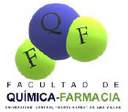Executive Secretary

7th International Symposium of Pharmaceutical Sciences
VII SICF
Abstract
The antithrombotic efficacy and safety of currently available antiplatelet drugs is limited for different reasons. Therefore, other effective, safe and low-cost therapeutic options are needed The fact that acetyl salicylic acid (ASA), a reference antithrombotic drug, was discovered from Salix alba L. (willow) allows suggesting that new therapeutic options could be developed from other plant species. Nevertheless, “antiplatelet” is not a popular term, being difficult to find clues from Ethnomedical studies. Instead, the knowledge of the antiplatelet activity of Citrus flavonoids suggesst that Citrus plants extracts could show this activity. The effect of Citrus aurantifolia Ch. (lime) leaves and Citrus sinensis L. (sweet orange) peels hydro-alcohol extracts, lime leaves extract (LLE) and sweet orange extract (SOPE) , respectively, on platelet aggregation (PA) were evaluated. LLE concentration dependently, inhibited PA in human platelet-rich plasma (PRP) in vitro induced by adenosine diphosphate (ADP) and epinephrine. On the other hand, SOPE prevented in vitro ADP-, collagen- and epinephrine-induced PA in a concentration dependent manner in human PRP, while ASA, was only effective against collagen and arachidonic acid . The ex vivo reduction of PA in rat PRP was demonstrated after a single intraperitoneal dose of SOPE. Like ASA, a seven-day treatment, but not a single oral dose of SOPE showed antiplatelet activity in rats. The results suggest that .C aurantifolia leaves and C. sinensis fruit peels could be the basis for the development of natural antiplatelet antiplatelet drugs.
Resumen
The antithrombotic efficacy and safety of currently available antiplatelet drugs is limited for different reasons. Therefore, other effective, safe and low-cost therapeutic options are needed The fact that acetyl salicylic acid (ASA), a reference antithrombotic drug, was discovered from Salix alba L. (willow) allows suggesting that new therapeutic options could be developed from other plant species. Nevertheless, “antiplatelet” is not a popular term, being difficult to find clues from Ethnomedical studies. Instead, the knowledge of the antiplatelet activity of Citrus flavonoids suggesst that Citrus plants extracts could show this activity. The effect of Citrus aurantifolia Ch. (lime) leaves and Citrus sinensis L. (sweet orange) peels hydro-alcohol extracts, lime leaves extract (LLE) and sweet orange extract (SOPE) , respectively, on platelet aggregation (PA) were evaluated. LLE concentration dependently, inhibited PA in human platelet-rich plasma (PRP) in vitro induced by adenosine diphosphate (ADP) and epinephrine. On the other hand, SOPE prevented in vitro ADP-, collagen- and epinephrine-induced PA in a concentration dependent manner in human PRP, while ASA, was only effective against collagen and arachidonic acid . The ex vivo reduction of PA in rat PRP was demonstrated after a single intraperitoneal dose of SOPE. Like ASA, a seven-day treatment, but not a single oral dose of SOPE showed antiplatelet activity in rats. The results suggest that .C aurantifolia leaves and C. sinensis fruit peels could be the basis for the development of natural antiplatelet antiplatelet drugs.
About The Speaker

Ph. D. Milagros T Garcia Mesa






